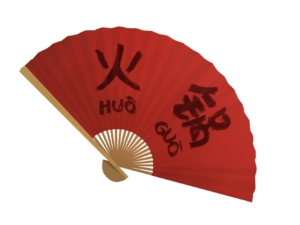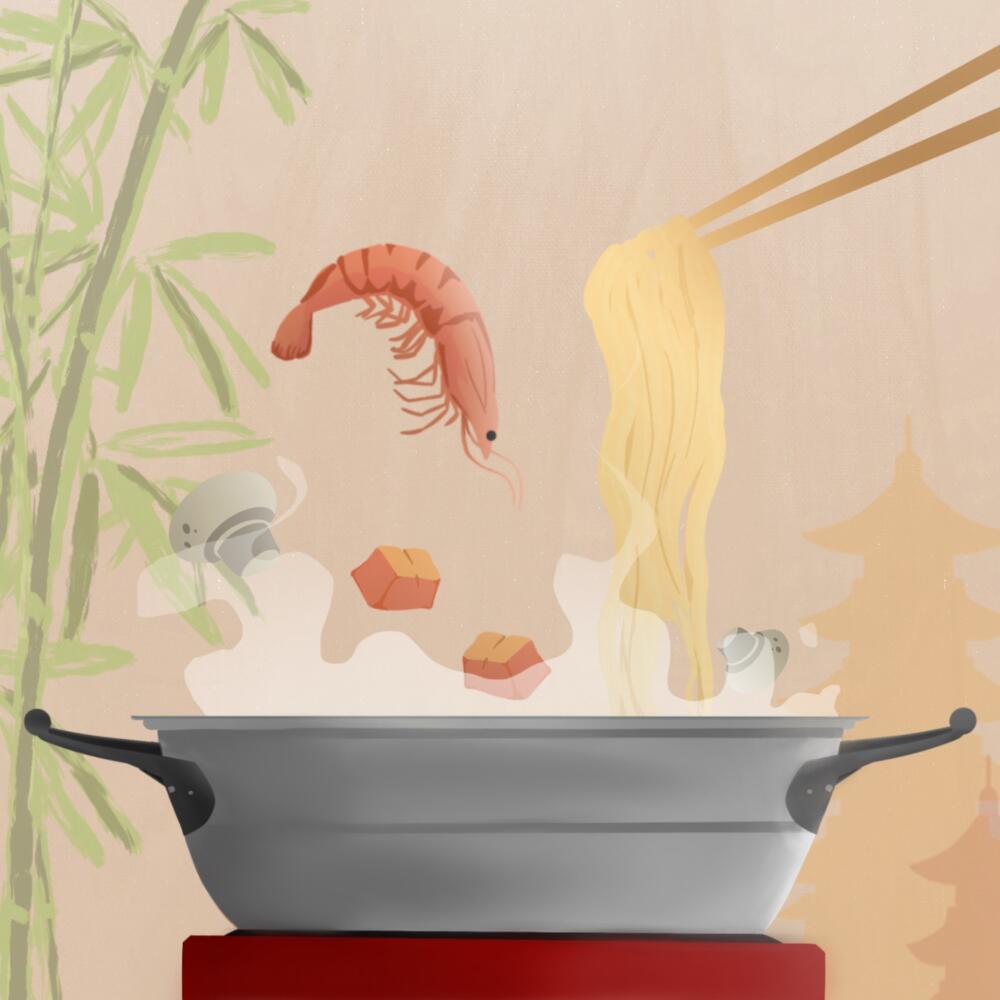A blast of warm air welcomes me as I open the front doors leading into a bustling hotpot restaurant. Customers mill about, serving themselves at sauce stations, soft-serve machines and chocolate fountains. Light pink and green paper lanterns hang from the ceiling along with bright red slips of paper inscribed with auspicious Chinese phrases, and the restaurant’s robot whirs past waiters with beeps and clicks, bringing meat and condiments to a nearby hotpot table.
The restaurant was overflowing and busy to the point where you wouldn’t believe that just a few years ago, it had been empty and uninviting.
Deliciously simple
Whenever someone mentions “Chinese food,” many immediately think of rice, dumplings, noodles and dim sum. It’s no surprise, as all these foods have become mainstream Chinese cuisine. Yet, the first thought that comes to mind when asked about Chinese food is always hotpot.
Why? Hotpot has started to mean more to me than just good food. It has also become a source of pride and a symbol of my cultural heritage.
 Dating a thousand years back to China’s Jin Dynasty, the concept of hotpot — pronounced huo guo in Chinese — originated from the culinary practices of Mongolian riders, tribes of nomadic horsemen who united under Ghengis Khan and conquered much of northern China while also controlling the prosperous Silk Road.
Dating a thousand years back to China’s Jin Dynasty, the concept of hotpot — pronounced huo guo in Chinese — originated from the culinary practices of Mongolian riders, tribes of nomadic horsemen who united under Ghengis Khan and conquered much of northern China while also controlling the prosperous Silk Road.
The concept is simple. A large pot of simmering broth, often with dividers to allow for several different broth flavors, is set on a burner in the middle of the table. The pot is surrounded by ingredients to be put into the broth and cooked, ranging from handmade noodles to countless rolls of lamb or beef. Each individual can also prepare personalized sauce to accompany their meals, resulting in a very customizable eating experience.
Family hearth
For every family birthday or special occasion, my family goes out to eat hotpot. The intimacy that comes with sharing food from a single pot always draws us together. Many of my fondest memories are connected to hotpot — countless moments with my family joking around a delicious meal.
We make hotpot at home in addition to eating it in restaurants. Quick and affordable, hotpot is the perfect comforting dinner to end a frigid winter day. Even the tedious cleanup afterward is tolerable thanks to the lingering bright atmosphere from the meal, becoming yet another precious bonding opportunity for my family.
A growing industry
The American hotpot industry is quickly growing and becoming a trendy food among teens and adults in America. This year, Mintel, a world-leading market intelligence agency, estimated the hotpot market’s consumer spending compound annual growth rate to be 9.9% between 2020 and 2025. Mintel has also recorded that the number of hotpot restaurants in the world has reached almost 600,000 in 2020.
But getting to this point was not easy. I remember when I was younger, my family would never eat hotpot in a restaurant for one reason — there was no such restaurant nearby.
East-Asian culture just wasn’t popular enough.
“When we [Haidilao] opened our first restaurant, we had no customers. We had to advertise on the streets and personally convince people to come eat. Compared to back then, we’ve grown by a lot.”
— Amy Qiu, Fremont Haidilao manager
It was a frustrating experience, not being able to satisfy my craving for high-quality traditional Chinese cuisine. Homemade hotpot is great, but eating out is always a different experience.
Top of the food chain
The reason certain traditional delicacies are so rare is simply because selling them isn’t profitable due to a lack of business and demand. People tend to be hesitant about trying new things. In fact, even Haidilao, currently the world’s largest global hotpot chain, had a difficult time establishing their business in the beginning.
“When we [Haidilao] opened our first restaurant, we had no customers,” said Amy Qiu, Fremont Haidilao manager. “We had to advertise on the streets and personally convince people to come eat. Compared to back then, we’ve grown by a lot.”
Although hotpot restaurants currently host a majority of Chinese and East Asian guests, steps are currently being taken to globalize hotpot and diversify the customers.
“We’ve done our best to localize each restaurant according to the wishes of the customers,” Qiu said. “We often ask our customers what can be done to improve our restaurants and we adapt according to their feedback.”
Haidilao’s adjustments have worked, increasing the number of non-East Asian customers drastically and allowing the hotpot chain to open up flourishing restaurants in bustling cities like New York.
“We currently have 12 hotpot restaurants in America with many currently planning on being built,” Qiu said. “Our goal is to have at least 50 restaurants open throughout America.”
Endless potential
Hotpot’s potential for growth is still far from its limit, and restaurants are opening quickly. With winter soon approaching, sales are only expected to rise.
As the hotpot industry continues to thrive, my cultural pride grows alongside it. It’s heartwarming to see so many other people enjoy the food that holds many joyful memories for me and my family, and I earnestly hope for many others to find comfort and warmth in hotpot as well.
Below is a map of the local area’s hotpot restaurants:





